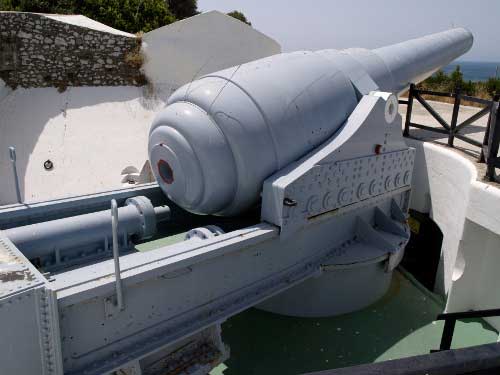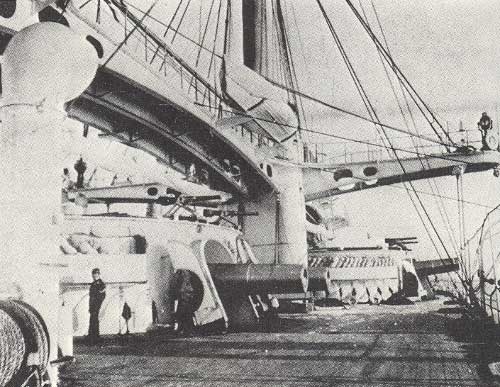In the late 1800's, several of the largest muzzle loading cannon ever made were built by Armstrong's Elswick Ordinance Company for the British and Italian Governments. They were classic cannon built on the Armstrong system of a primary steel tube, with successive, shorter wrought iron tubes heated and shrunk on the main tube. This kept the gun's barrel under compression, and although Armstrong himself didn't think this was strong enough for big guns, the British Government thought it was and convinced him to make bigger and bigger guns.

It has been said that an Armstong gun never burst, however one of the 100 ton guns did split during test firing at Magdala battery in Gibraltar, and one of the Italian guns cracked also. The original 4 British guns were divided between Gibraltar and Malta and of these only 2 guns survive today. They were beasts, with a 17.72 inch bore which was a little over 30 feet long. It's ammunition weighed 2000 pounds, with 450 pounds of black powder behind it. Armor piercing, high-explosive and shrapnel shells were available, but it's armor piercing qualities quickly became obsolete, with other advancements in breech loading and chemical composition of propellants. Shrapnel's usefullness in these guns was condidered marginal and discontinued shortly.

The gun's maximum range was 8 miles, but it's armor piercing shell was only effective out to 1 mile. Loading was a problem, as everything needed to be done with steam powered hydraulic loaders, and getting up a head of steam from go could take three hours, but this was considered acceptable, and once going could be fired four times a minute. It took a crew of 35 men to service each gun. In a footnote, one of the Gibraltar guns experienced a hangfire, and a crewmember had to be lowered down the barrel to attach a hook to remove the shell. That guy had some nerve.

The guns were installed in response to Italy's installation of the same guns on 2 of it's battleships, but were never used in anger. The fact that Armstrong sold these guns to Italy really rankled the British Government, but presaged the armament industry's selling to both sides. They were last fired with full loads in 1903-4, but were kept ready during WW1, although they were hopelessly outclassed by that time. One of the Gibraltar guns is part of a foundation of a building (the one that split) and the last 2 guns are now tourist attractions.

